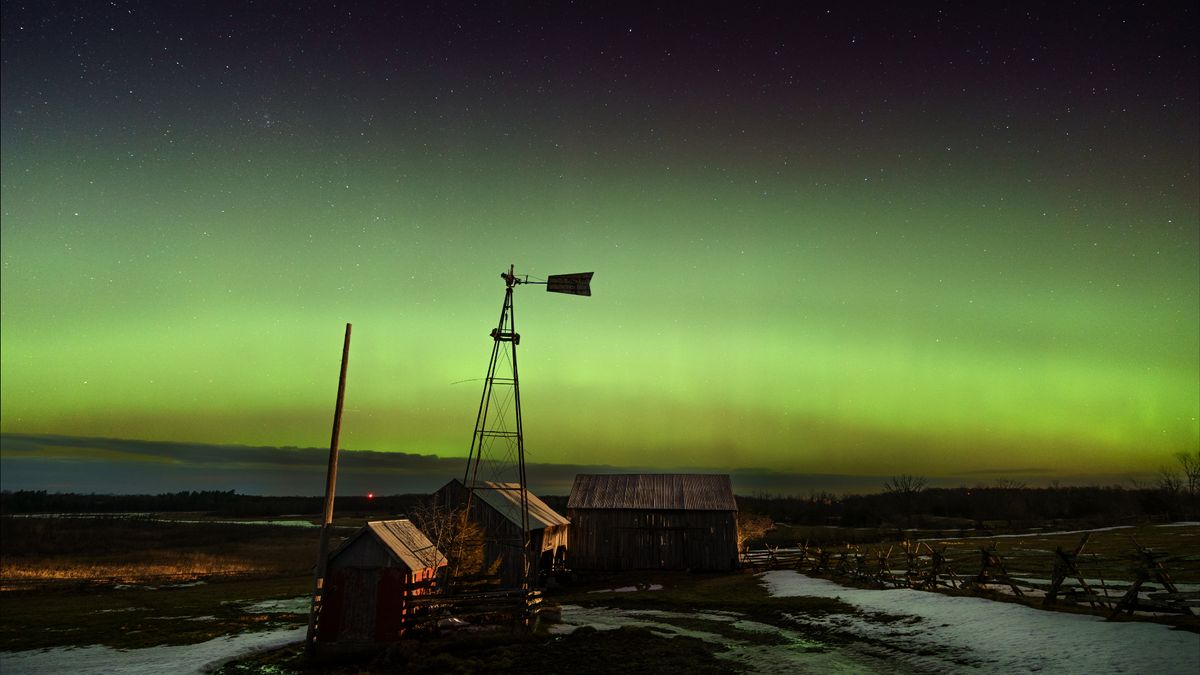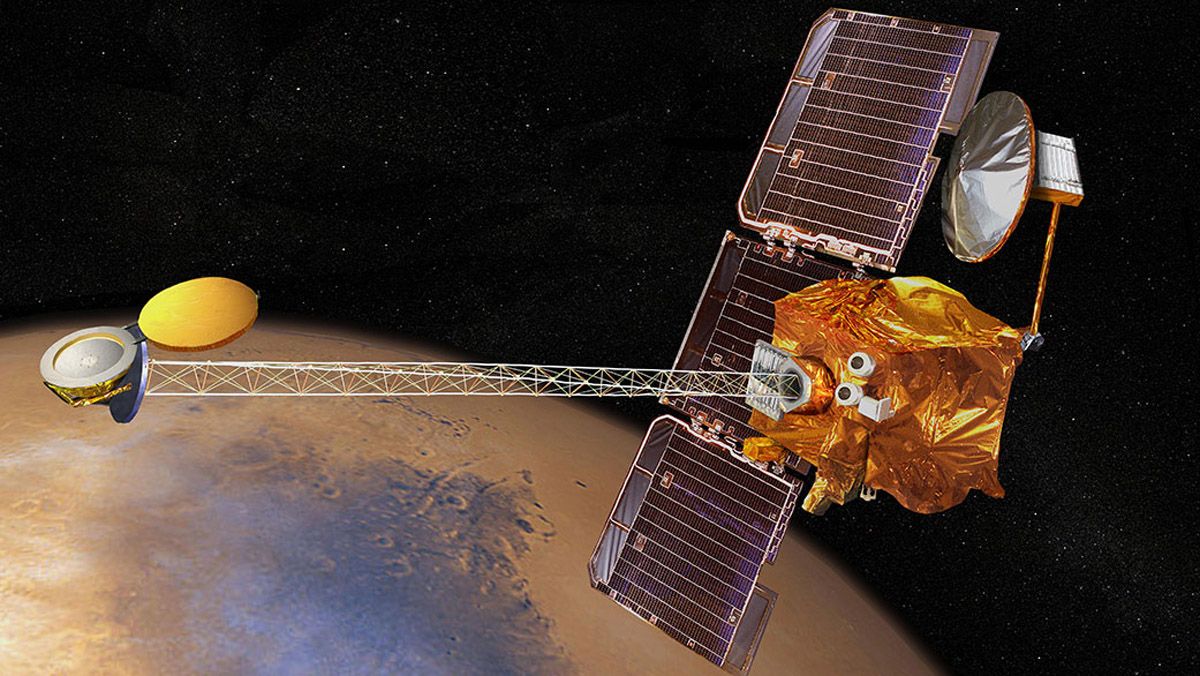Essentially the most highly effective photo voltaic storm in practically six years slammed Earth immediately (March 24), however surprisingly, house climate forecasters did not see it coming.
The geomagnetic storm peaked as a extreme G4 on the 5-grade scale utilized by the U.S. Nationwide Oceanic and Atmospheric Administration (NOAA) to evaluate the severity of house climate occasions. The storm’s surprising ferocity not solely made auroras seen as far south as New Mexico within the U.S., but it surely additionally compelled spaceflight firm Rocket Lab to delay a launch by 90 minutes.
Geomagnetic storms are disturbances to Earth’s magnetic field attributable to photo voltaic materials from coronal mass ejections (CME) — massive expulsions of plasma and magnetic discipline from the sun’s atmosphere. It seems that this explicit geomagnetic storm was triggered by a “stealth” CME which — because the title suggests — is quite tough to detect.
Associated: Huge solar tornado as tall as 14 Earths hurls plasma cloud into space. Here’s the video.
NOAA’s Nationwide Area Climate Service initially announced a “geomagnetic storm watch” on March 22 (opens in new tab), to return into impact on 23-25 March with doable reasonable G2 storm situations anticipated on March 24. So forecasters weren’t utterly caught off-guard, they nevertheless did not count on a magnitude G4 storm.
It wasn’t till 00:41 a.m. EDT ( 0441 GMT) on March 24 that NOAA uprated the warning to a severe G4 storm, which was after a stronger than forecasted G3 storm (opens in new tab)escalated to a G4 at 12:04 a.m. EDT (0404 GMT).
(opens in new tab)
U.S. house climate forecaster Tamitha Skov defined to Area.com in an e-mail why the house climate group obtained it so unsuitable with this newest storm.
“These practically invisible storms launch rather more slowly than eruptive CMEs and are very troublesome to look at leaving the sun‘s floor with out specialised coaching,” she stated, including that the stealth CMEs may also be “camouflaged” by different, extra dense buildings emanating from the solar, which makes them troublesome to look at.
“This is the reason they’re the reason for “drawback geomagnetic storms” just like the G4-level storm we’re in now.” Skov continued.
You’ll be able to be taught extra about these stealthy photo voltaic storms in Skov’s latest YouTube video (opens in new tab) the place she describes the space weather occasion in additional element.
NOAA (opens in new tab) ranks geomagnetic storms on a scale working from G1, which may trigger a rise in auroral exercise across the poles and minor fluctuations in energy provides, as much as G5, which incorporates excessive circumstances just like the Carrington Event — a colossal photo voltaic storm that occurred September 1859, which disrupted telegraph providers all around the world and triggered auroras so vibrant and highly effective that they had been seen as far south because the Bahamas.
Sturdy geomagnetic storms might be troublesome for spaceflight as they enhance the density of gases in Earth’s higher ambiance, thereby rising the drag on satellites and different spacecraft. In February 2022 SpaceX lost up to 40 brand-new Starlink satellites after they failed to succeed in orbit after being launched right into a minor geomagnetic storm.
Rocket Lab delayed its launch this morning by roughly 90 minutes whereas assessing the evolving conditions (opens in new tab) of the geomagnetic storm, the corporate introduced on Twitter. They efficiently launched at 5:14 a.m. EDT (0914 GMT).
One other facet impact of highly effective geomagnetic storms is the unimaginable aurora shows they set off. When energized particles from the solar slam into Earth’s atmosphere at speeds of as much as 45 million mph (72 million kph), our planet’s magnetic discipline funnels the particles towards the poles. The following supercharging of molecules in Earth’s ambiance triggers the colourful spectacles, which often stay restricted to areas at excessive latitudes. This time, skywatchers world wide had been handled to a blinding auroral show that reached as far south as Colorado and New Mexico.
We will count on extra excessive house climate occasions like this highly effective geomagnetic storm because the solar builds in the direction of a peak in its 11-year solar activity cycle, anticipated to happen in 2025.


